EMBRACING MINIMALISM: PART THREE
July 8, 2021
MINIMALISM IN PRACTICE: OBSERVATIONS AND IDEAS
If you haven’t read earlier articles in this series, Part One is here and Part Two is here. I’m currently at over seven months of living in my van, and while I’m still very new to this lifestyle and am definitely not an expert, I think my perspective is fresh! I’ve had to learn these lessons recently and they’re ready to share.

What are some actionable and practical methods to move towards a minimalist lifestyle?
In this article, I’m going to do my best to answer that question for you. As a woman, there will be a couple pieces of information that may be more relevant to women, but there will be plenty here that anyone can take and apply to their own personal situation–whether that’s living in a van or simply trying to reduce the amount of things they own. There might be some ideas here that seasoned van life veterans may disagree with, bit at the very least, this is a great starting point for people who don’t have much experience with this. In any case, I hope this is helpful information, so let’s get to it!
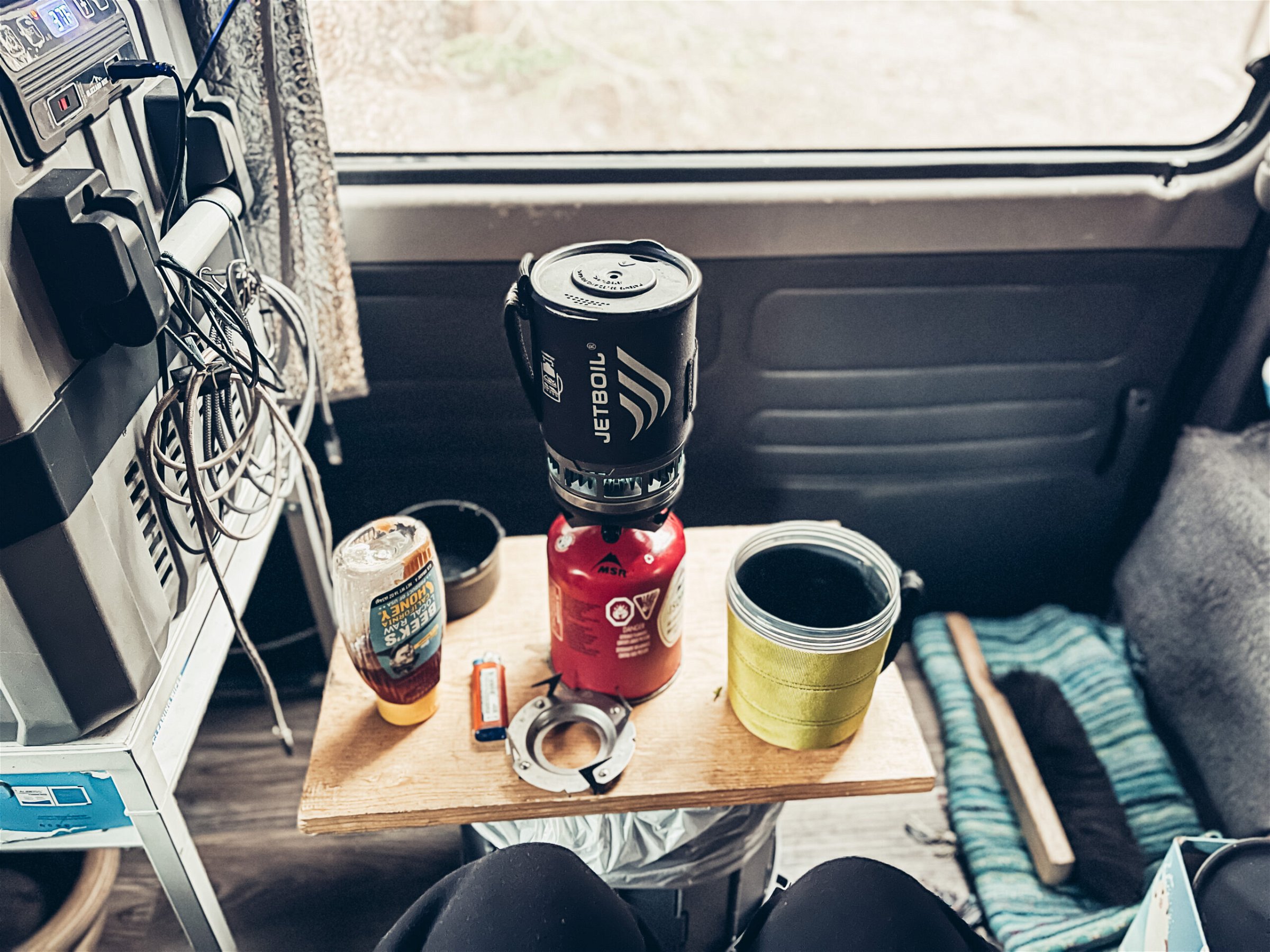
My trash can/emergency toilet (haven’t had to use it yet FYI haha) with my cooking table/desk on top with my mug/measuring cup/bowl/food storage container with my coffee maker/tea maker/hot bath maker/oatmeal and soup cooker.
OBSERVATIONS, FOOD FOR THOUGHT, AND RECOMMENDATIONS
- Start your trip with a 30-60 day trial run, with deliberate plans to return to your home base and drop off what you’ve discovered you don’t need. This is relevant only to those who plan on embracing minimalism by transitioning to a mobile lifestyle. And it becomes even more crucial if you’re doing your build on the road like we did. Because we didn’t have the opportunity to complete our build before we left, we decided we’d bring everything we thought we might need and donate and mail items home as necessary. After multiple trips to donation centers and multiple UPS packages upwards of $50, I quickly began to realize that it would’ve been incredibly helpful to have planned for a trip back to home base to drop off everything we didn’t need. 30 to 60 days is plenty of time to get accustomed to living in a small space and to figure out what you like, what you don’t like, and what you actually need. I had planned to leave my home base in Washington and not return for about eight months, so, I paid for it in UPS costs. Often, the cost of shipping outweighed the dollar value of what was contained in the box! But, if something was important to me, still worked, and I wanted to keep it, I paid the price.
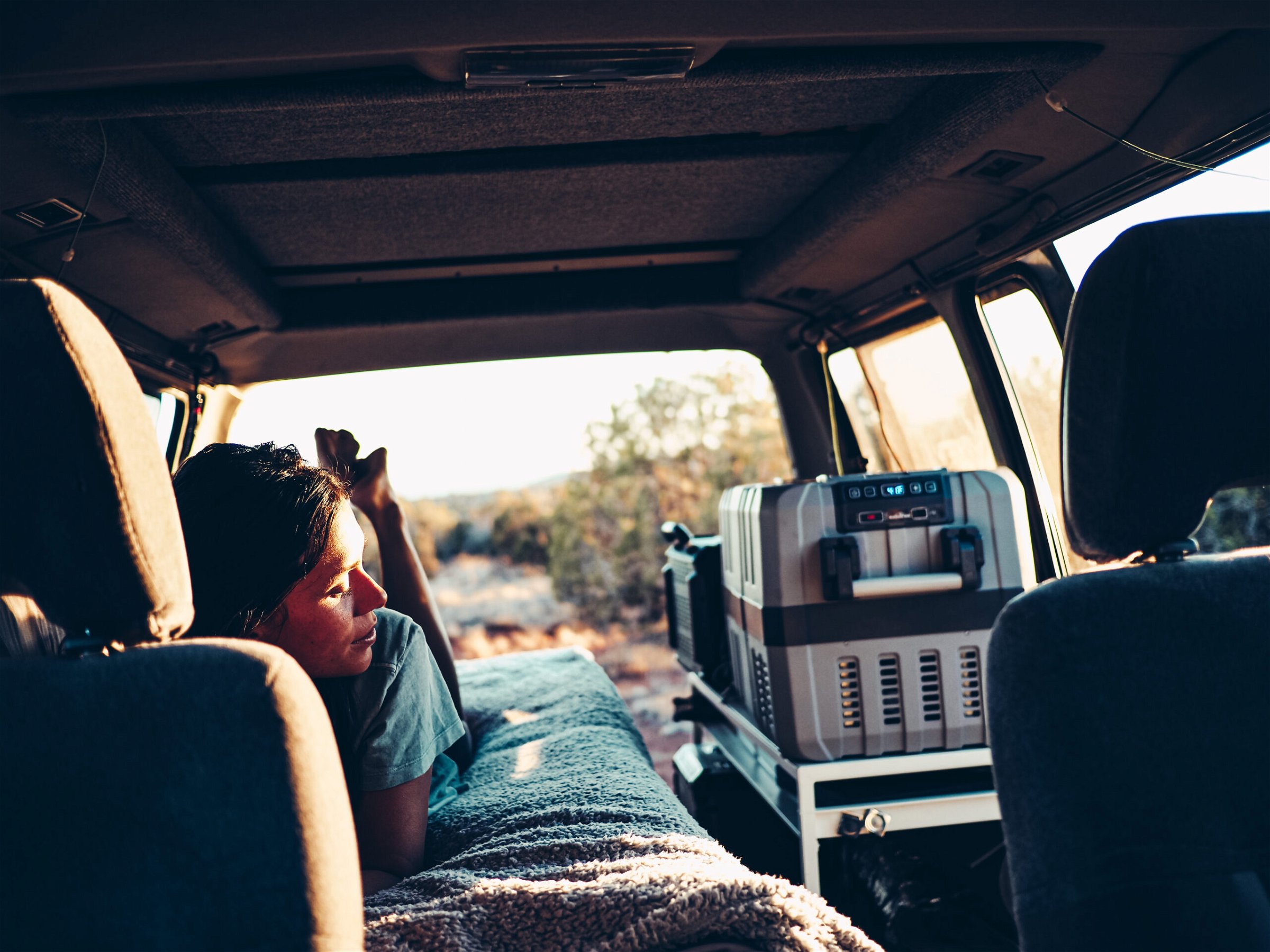
- Space saving tactics are only as useful as your ability to simultaneously be organized. In other words, saving a bunch of space is really only helpful if you can access your stuff and there’s some sense of order! This sounds like common sense, but things very quickly devolve into chaos in a small space, particularly when you’re living with two people. Furthermore, something I’ve noticed is that—particularly relevant for a smaller van with less storage—you are consistently moving things around to access other things. This can be quite chaotic if you have more stuff, and it still remains chaotic for me even at this point. For example, in order to get to my silicone food storage container so I can put dinner away, I have to move my pots, pull out my stove, slide my “kitchen” bin out from under the couch bed, and grab my container. So these things are spread out over the seven sqft of floor space while I’m bent over trying to reach under the couch to grab my bin, while my boyfriend is trying to stand in the same seven sqft and work. It doesn’t sound like much of a hassle, but when you’re doing these little actions over and over again, it very clearly illuminates the inefficiencies in your living situation. A useful way to alleviate this is to prioritize accessibility by frequency of use. So for the items I use most often, I identified ways in which I can store them in areas that are easier to access. Another illustration: You could very easily save a ton of space by unpackaging everything and moving it all into gallon and quart zip lock bags and then squishing them all into storage bins. But anytime you needed something, it’d take forever to sort through all of those bags, trying to figure out what’s what, and what’s buried at the bottom of the ocean of bags. So while placing some smaller boxes or containers within a larger storage bin may take up additional space, it will provide you with the ability to organize your items better, which will ultimately save you time and frustration.
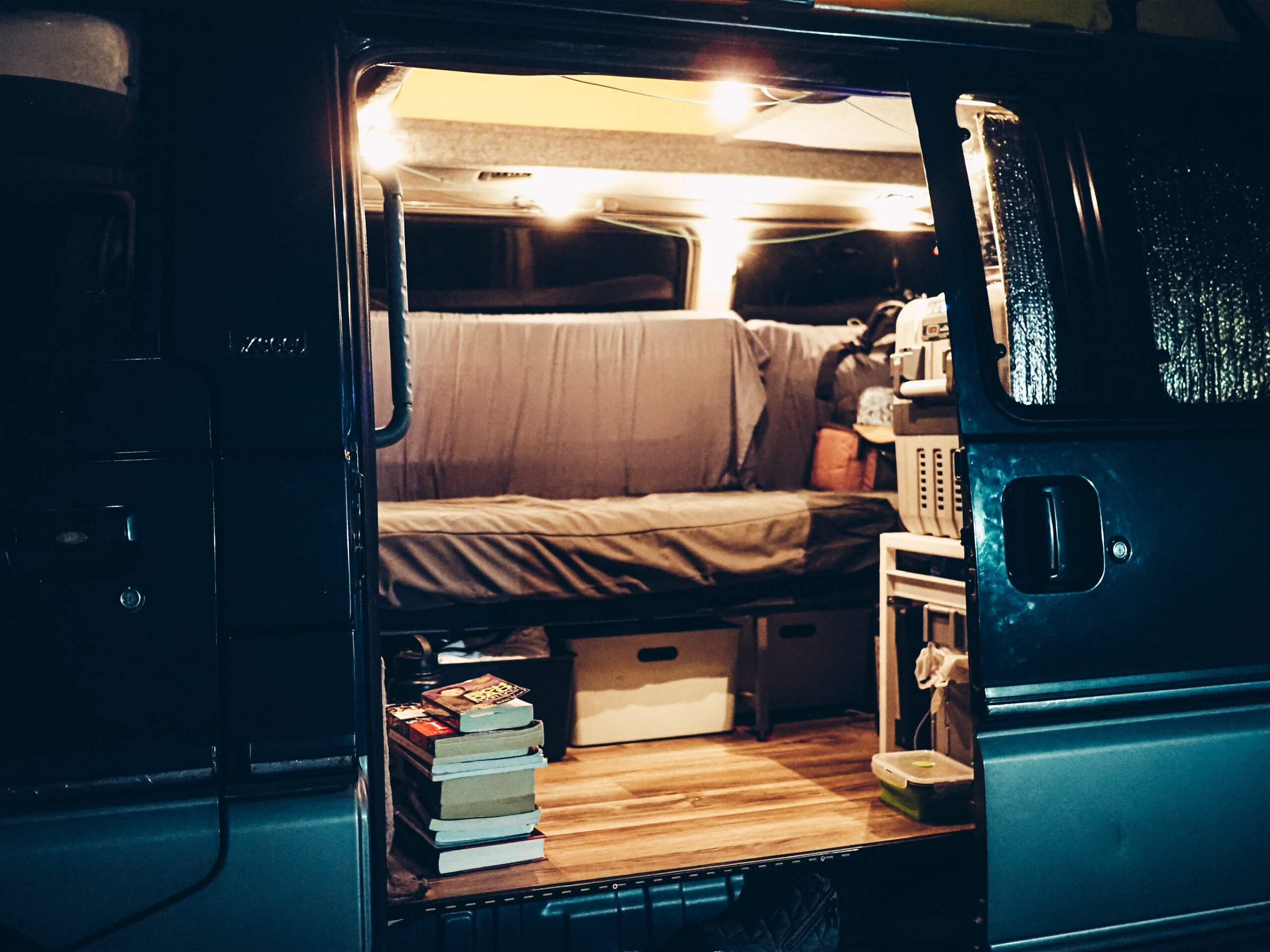
- Remove products (including food) from their standard packaging before leaving the store parking lot and throw them away in the trash. Unfortunately, one of the most prolific items we accumulate is garbage. Isn’t that depressing? For me, it was completely unexpected and it’s one of those things that you don’t realize until you’re actually living this way. I’m planning to write more about this later in a piece about some of the negative aspects of living in a van. But, in the meantime, once you finish your errands at the grocery, a useful thing to do is sort through the groceries in your van, unpackage everything as much as possible and break down and toss any and all non-essential packaging. Particularly important in a small rig, trash takes up space and it needs to be stored in a place where it won’t be accessible to animals. That being said, when I’d get to a campsite and start sorting through my groceries, I’d find that I’d often produce an entire grocery sack of trash just from unpacking! It’s really ridiculous. But for now, it’s the way of the world. You can try to purchase items that use less packaging, and I think that’s great, but it doesn’t necessarily work well in all scenarios–more on that in a later piece as well. So if you unpackage in the parking lot and throw it all away before you leave, you significantly reduce the amount of rubbish you’re hauling around with you for no reason.

- Capitalize on multi-use clothing. For me, I have one bin that holds all of my clothing, except for a couple of hats and a jacket. If there’s anything else that exceeds the capacity of my clothing bin, it goes. So, multi-use clothing has become important! An example of that looks like a lot of sports bras and swimsuit tops and one pair of black swimsuit bottoms. These are tops that I use for swimming or just everyday wearing, and I’d need to use them anyway. And if I have one pair of black bottoms, I can wear them with any of these tops. Another example are swim trunks for guys. They can just be shorts…and you can also swim in them. So instead of having your running shorts, and your basketball shorts, your dad cargo shorts (don’t act like you guys don’t wear them), your jorts, AND your swim trunks…just wear swim trunks. You can hike, bike, swim, walk, shop, and camp in them. AND they’re easy to wash and dry very quickly. Something you have to accept with multi-use clothing is that you’re ultimately prioritizing function over fashion. And even more so, prioritizing multi-purpose functionality over specific functionality. And while I think many dudes would scoff at this and potentially assume this is fairly easy, I’d be interested to see inside of your closet. I bet you have a lot of clothes. We all do. And reducing is not always easy, although it is more difficult for some people.
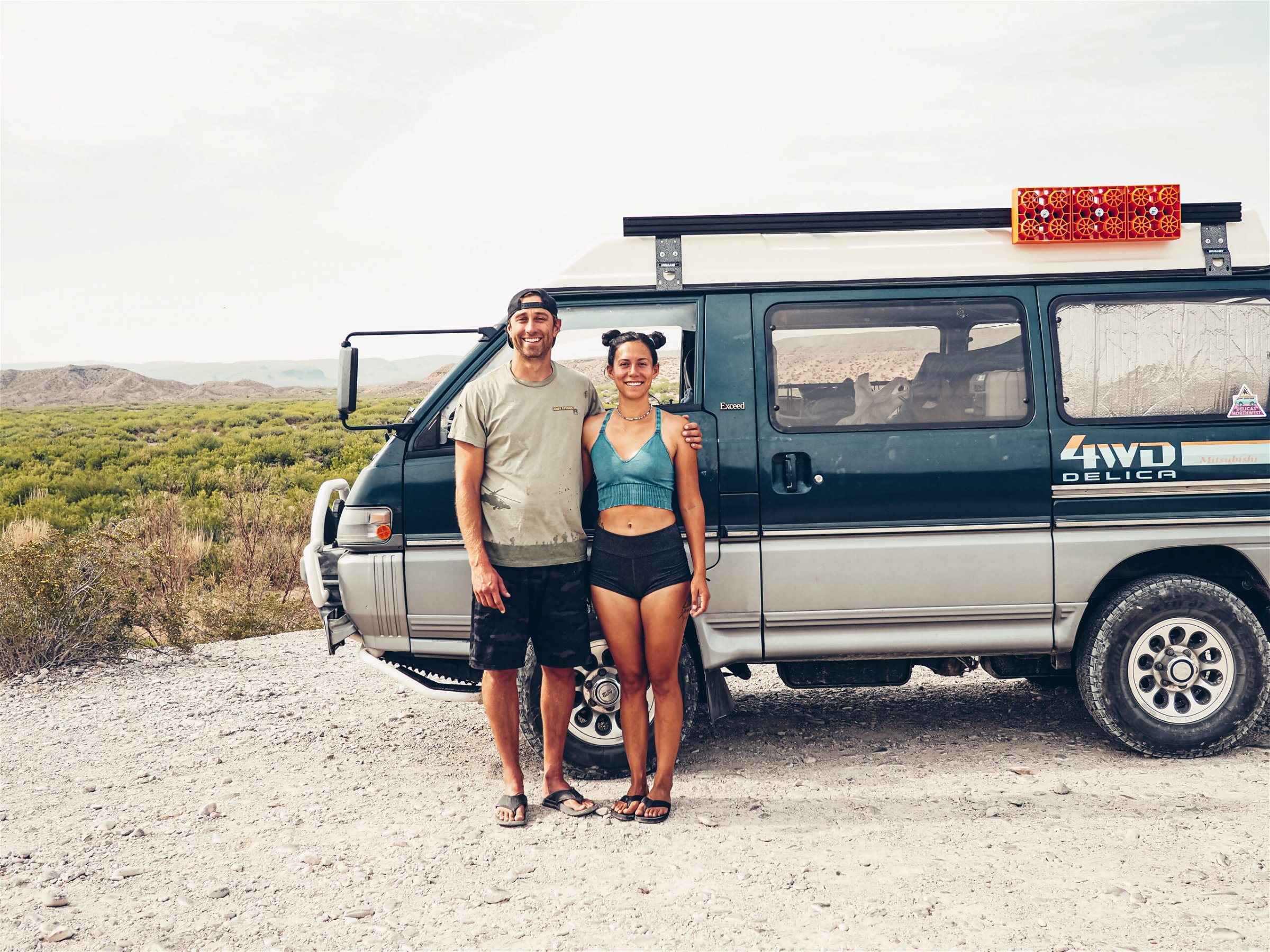
- An antidote for stockpiling items you can only get online is the Amazon drop box. If you haven’t used these yet, they are great. I do go to the grocery store frequently, but because I’m always in new places, often in smaller towns, sometimes I simply can’t find the items I’m looking for. And I’d rather avoid really large cities, and don’t want to make an exception just to get one item I haven’t been able to find at any of the mom and pop grocery markets I’ve visited. So, I order products online and typically use Amazon because there are drop boxes in most places. Instead of having to wait until I’m visiting family, have an address, and then ordering the item multiplied by five, I can really order precisely what I need in most regions. As a result, I’m able to only order what I actually need right then, because I know that I’ll be able to order a replacement when I need one. Another options is to order items to be shipped to a UPS store location. I’ve also done this before, although it’s not my preferred method. I use it when I am ordering from a site other than Amazon, or someone is mailing me something. Some UPS stores will hold your item for a set amount of days and then return it if you don’t pick it up. From my experience, they charge a small fee to receive and hold your item. Since it doesn’t seem as commonly practiced, you really need to make sure you clarify that you’re a traveler and explain your situation and call the store as soon as you’re notified your package has been delivered to make sure there isn’t a misunderstanding and it’s not accidentally sent back. These two ideas ultimately enable you to store less in your vehicle by only buying things as you need them.
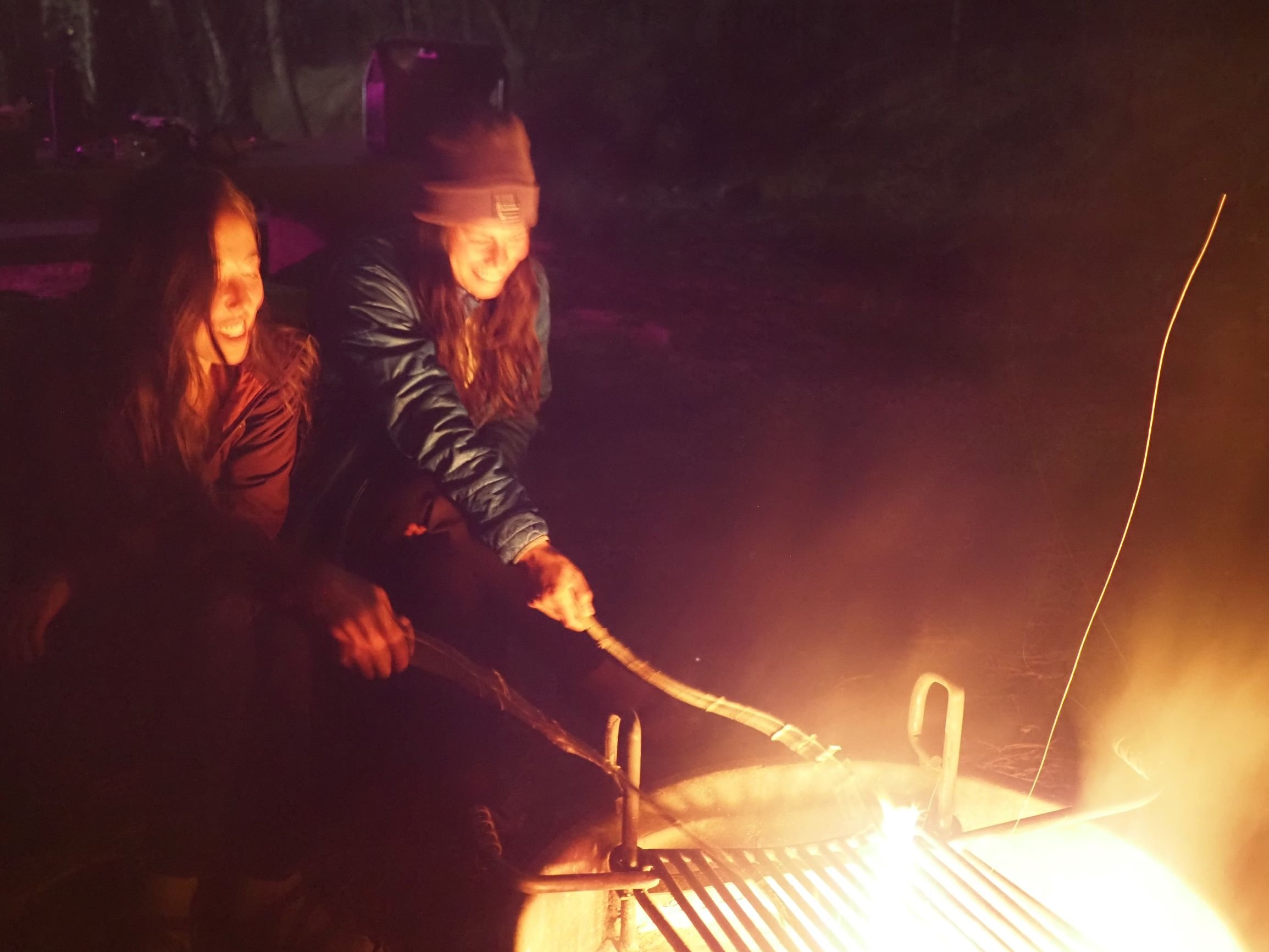
- Identify as many multi-purpose, multi-use items as possible and eliminate as many single purpose items as possible. Ok, this is something I already mentioned in the first two parts of this minimalism series, but I’m reiterating it again. Now this likely isn’t possible with *every single* item you own. There will be items that only have one purpose. But it’s an opportunity to exercise your mind and think creatively to identify items that you use in different ways for different tasks. Even if you have a larger rig with a lot of storage space, it is absolutely FREEING to not have your space filled to the brim with CLUTTER. Yes, it takes a bit more thought and a little bit of work, but this is something that is worth it. Having headroom and just space to stretch out is so satisfying, especially when there’s inclement weather outside! So, whatever your situation is, I’d encourage you to consider this, as it’s really been beneficial for us while we’re living in this small overlanding vehicle.
- A rule: in order to get something new, whether it’s clothes or snacks or whatever, you have to get rid of something. Ok, this is a GREAT rule to follow. As you slowly organize your space and determine what will go where and how it will be contained, this is the time you can look at your clothing bin and tell yourself, “Ok, this is all I’m going to keep. And if I get anything new, it’s a trade. Something has to go!” This can be applied to your spice cabinet, your snack drawer, your canned food shelf, your jewelry bag, or your books. Make the rule, come to an agreement, and stick to it! This just puts you in a headspace where you are willing to accept less with the recognition that it will give you more. More space, more freedom, more time to do what you want.
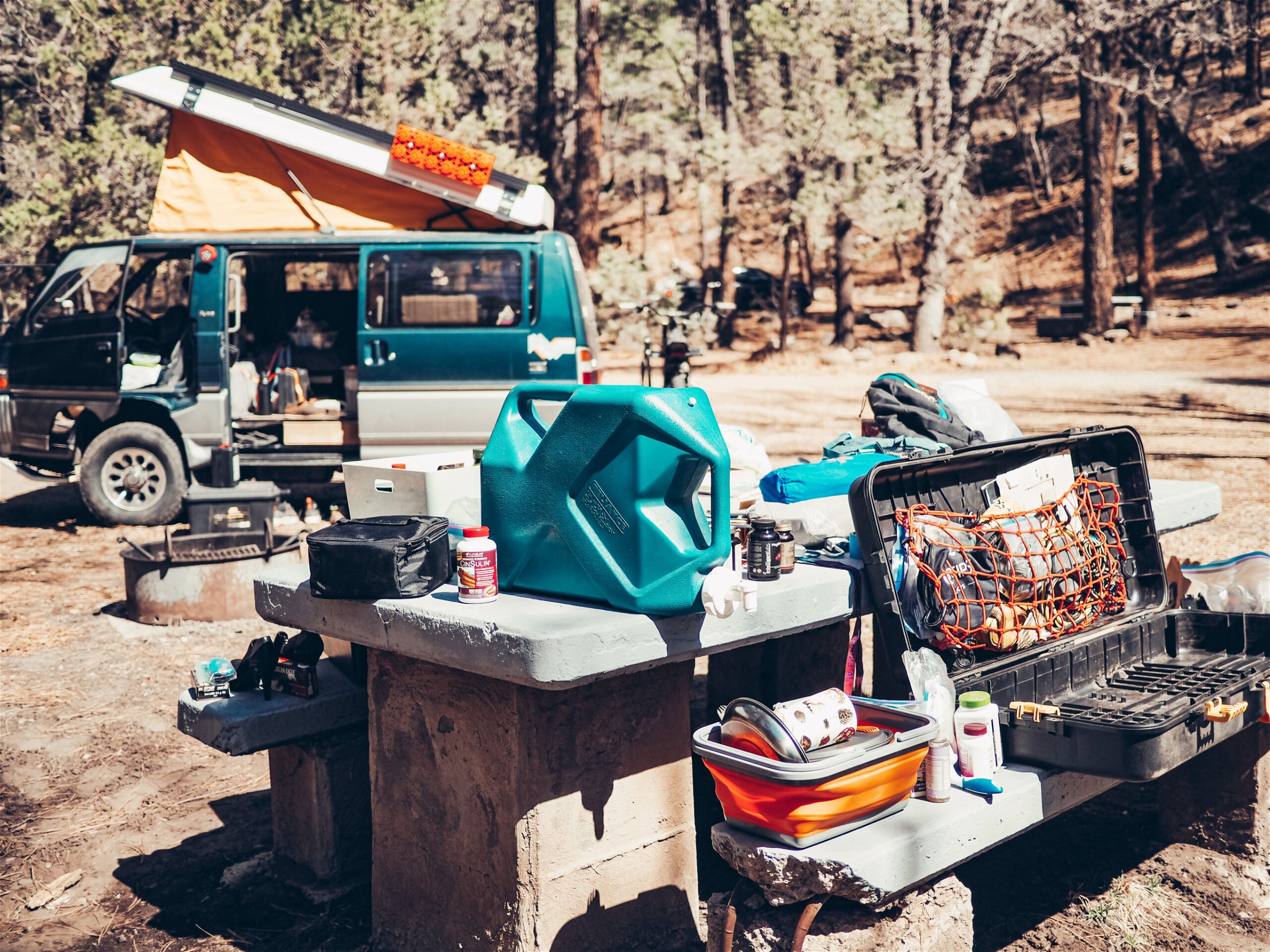
Welcome to the circus.
- Identify souvenir ideas that don’t take up space! For me, it’s photographs. For some, it’s magnets–or stickers. I’ve seen others collect patches for their backpack, vehicle decals for their van, or Polaroid photos for their corkboard. I mean, if you want to collect a coffee mug or a dolphin figurine at every city and attraction you visit, be my guest, but it’s objectively not practical. Unless maybe you’re living alone and have a huge rig and don’t mind clutter. There’s absolutely nothing wrong with buying a mug. However, if you decide what you’re going to collect BEFORE you leave on your trip, you can make a decision, stick to it, and not become distracted by trinkets and clutter that will derail your minimalist journey. And…waste your money.
- I didn’t wear make-up in the Army as it is, and while I’ve actually had the ability to embrace some degree of femininity now (which I love), I still wear very little to no make-up. I remember being deployed on a humanitarian mission with a very sweet woman who seemed to be obsessed with her physical appearance. I helped her dye her hair and eyebrows once every few weeks in the shower trailer on the base. She had a neon pink fuzzy rug for her cot, owned more make-up than I’d seen in my life, and her fingernails and toenails were always neatly manicured. She was a friendly, naturally beautiful woman, who spent a significant amount of time and money on these items to enhance her physical appearance. There’s nothing wrong with this in itself–and that’s not where I’m taking this conversation. Instead, my criticism of her preferred lifestyle is simply meant to highlight the impracticality of dedicating the space, money, and time to your physical appearance while living a more extreme minimalist, mobile lifestyle. If that’s your priority, and it’s important to you to put effort into looking your best, I think that’s great. For me, I’ve found that there’s a lot of freedom in instead trying to be as natural and healthy as possible. My thought is, if I focus my efforts on nutrition, little to no alcohol and tobacco, very little sugar, healthy amounts of sunshine, physical activity, moisturizing my skin, protecting my skin, intellectual stimulation, and healthy social relationships, I hopefully won’t need the makeup and manicures. And as it’s been, I feel much healthier than I have in many years.


I sincerely hope these suggestions inform your research and planning as you map out your minimalist journey. Again, I’m no expert, but this is what I have to offer! In Part Four, I list specific items that I’ve found to be helpful while living in this Delica van. You can find it here. Thank you for taking the time to read!
Best of luck to you as you work towards reducing the clutter in your life!
